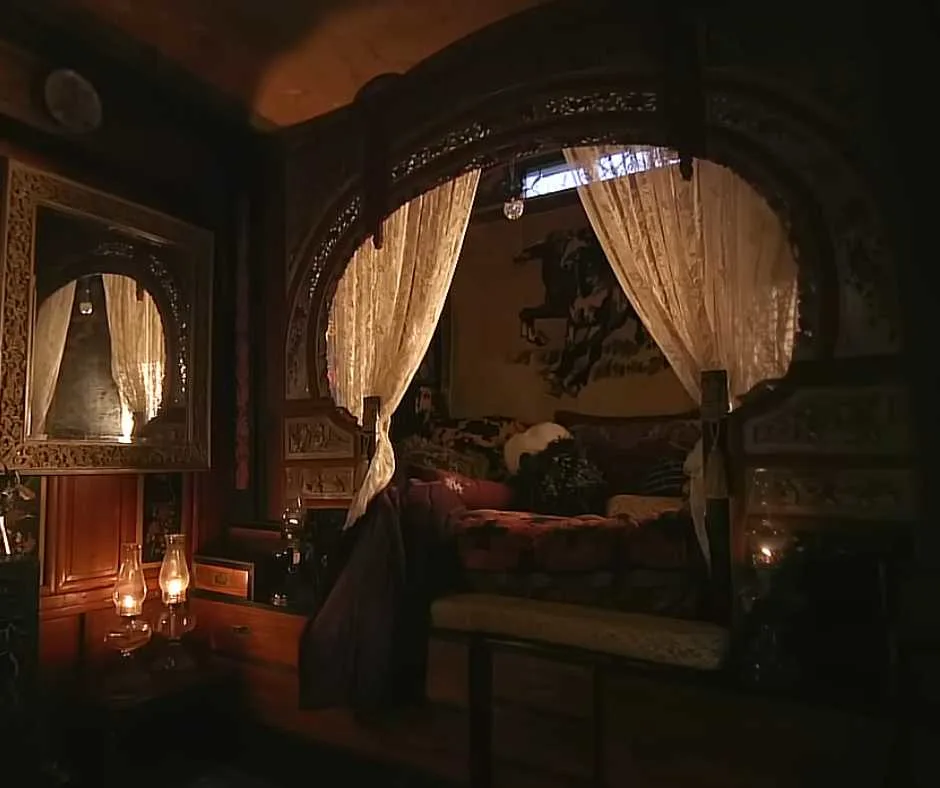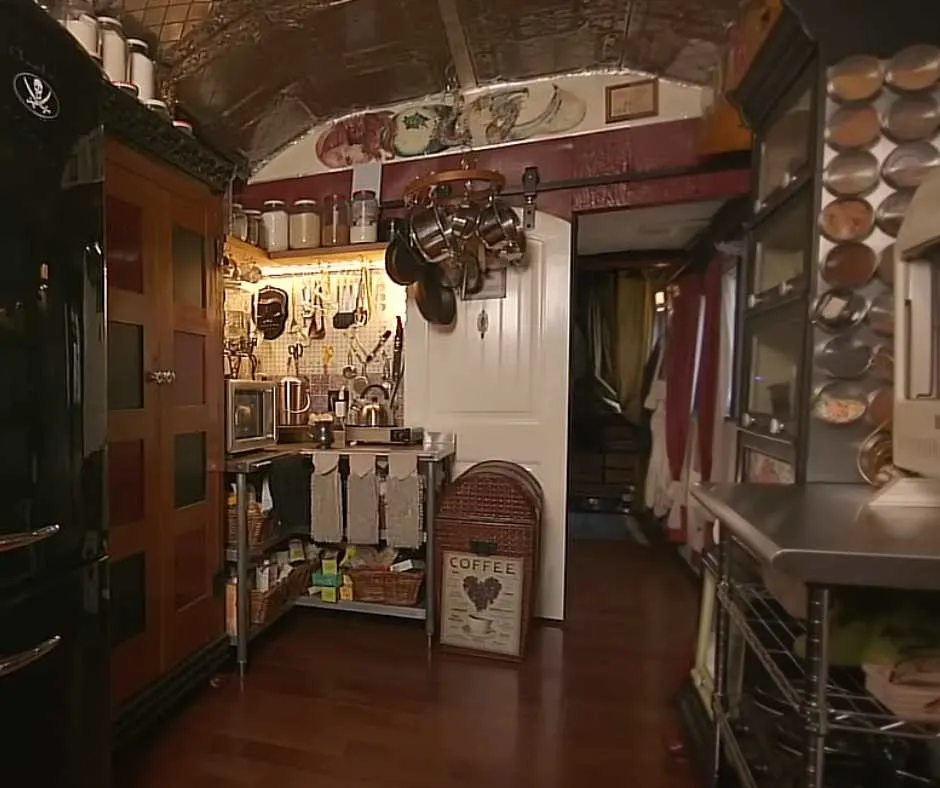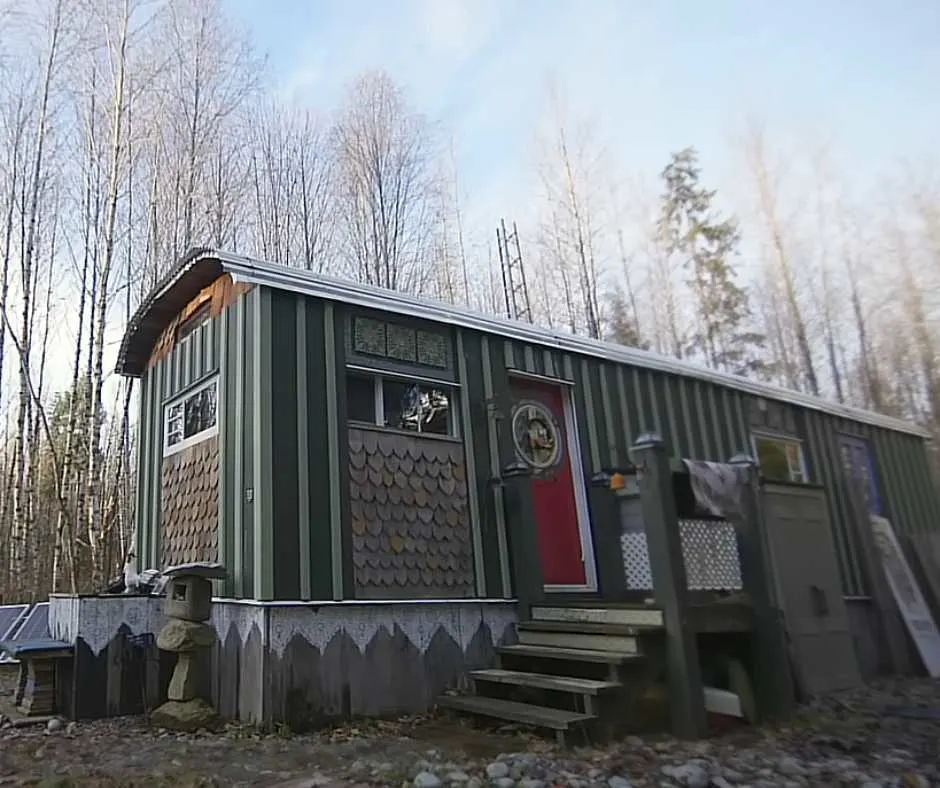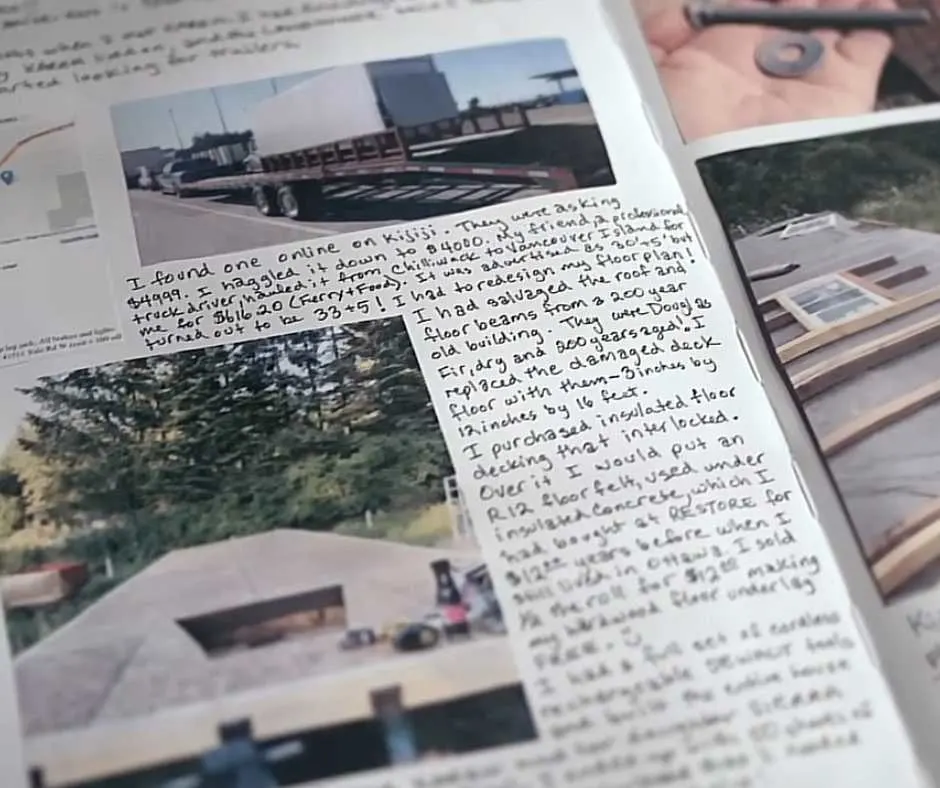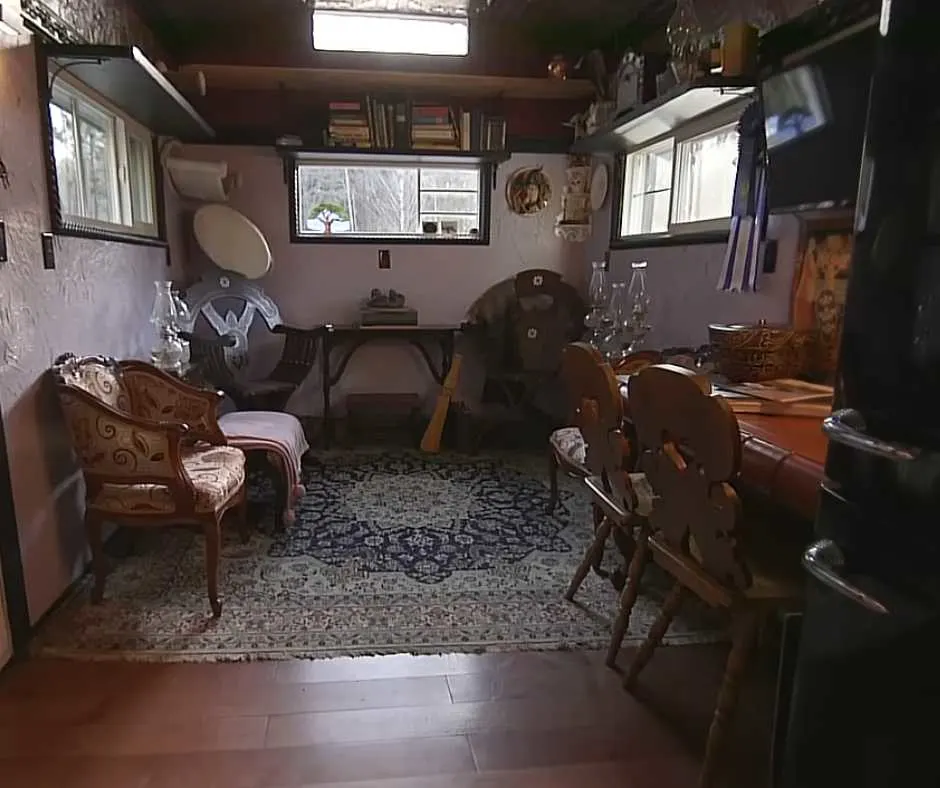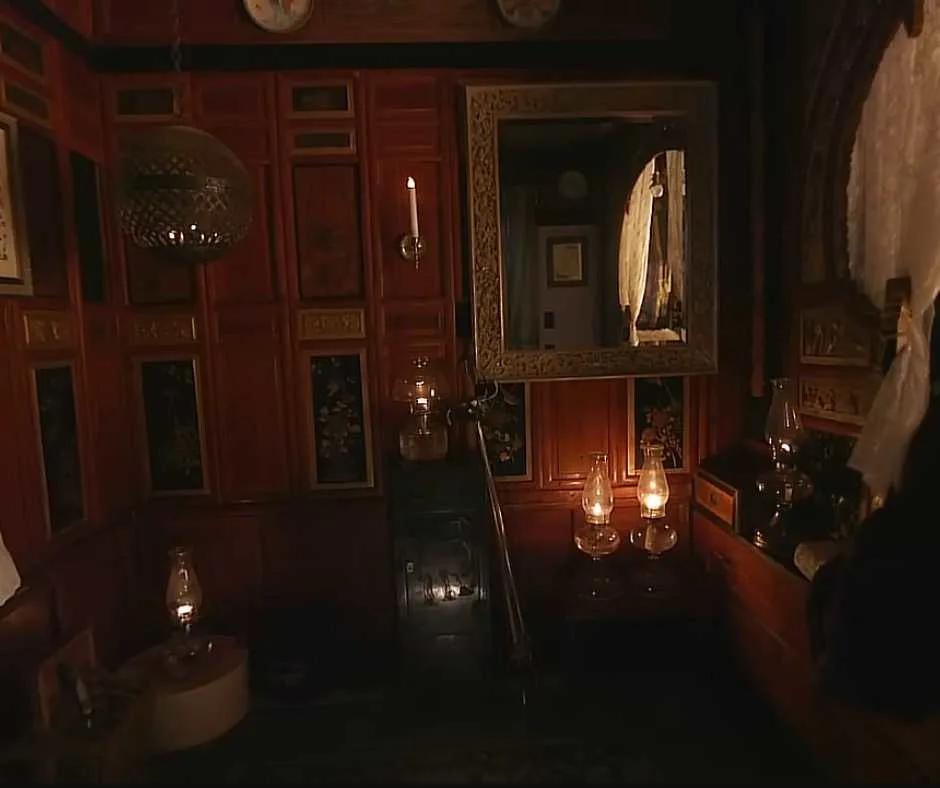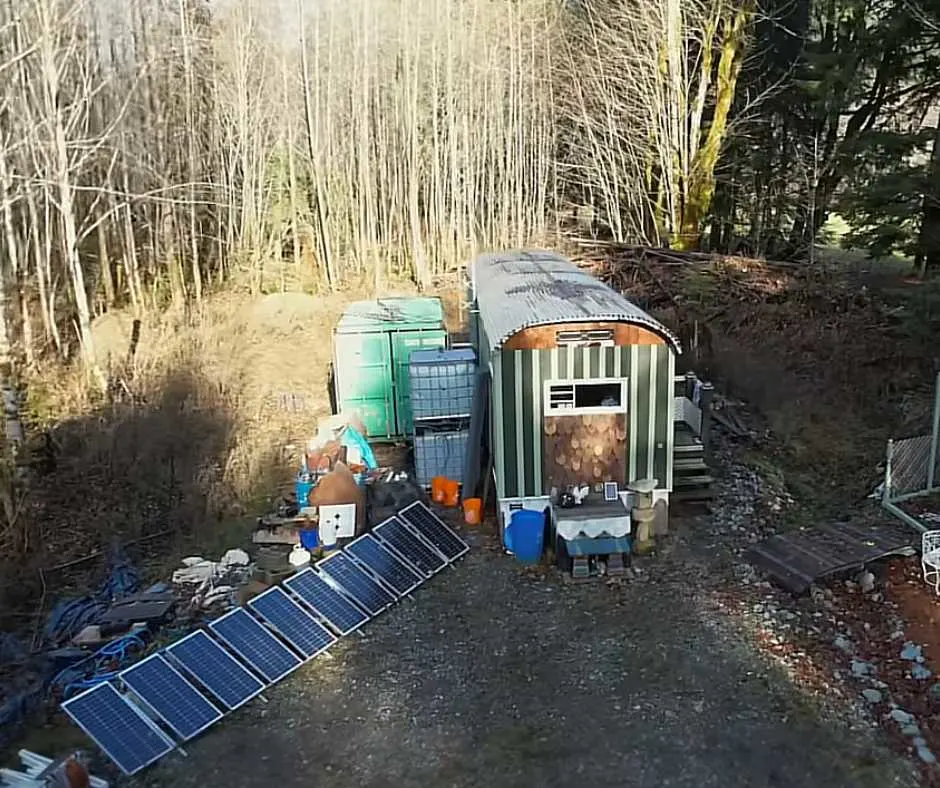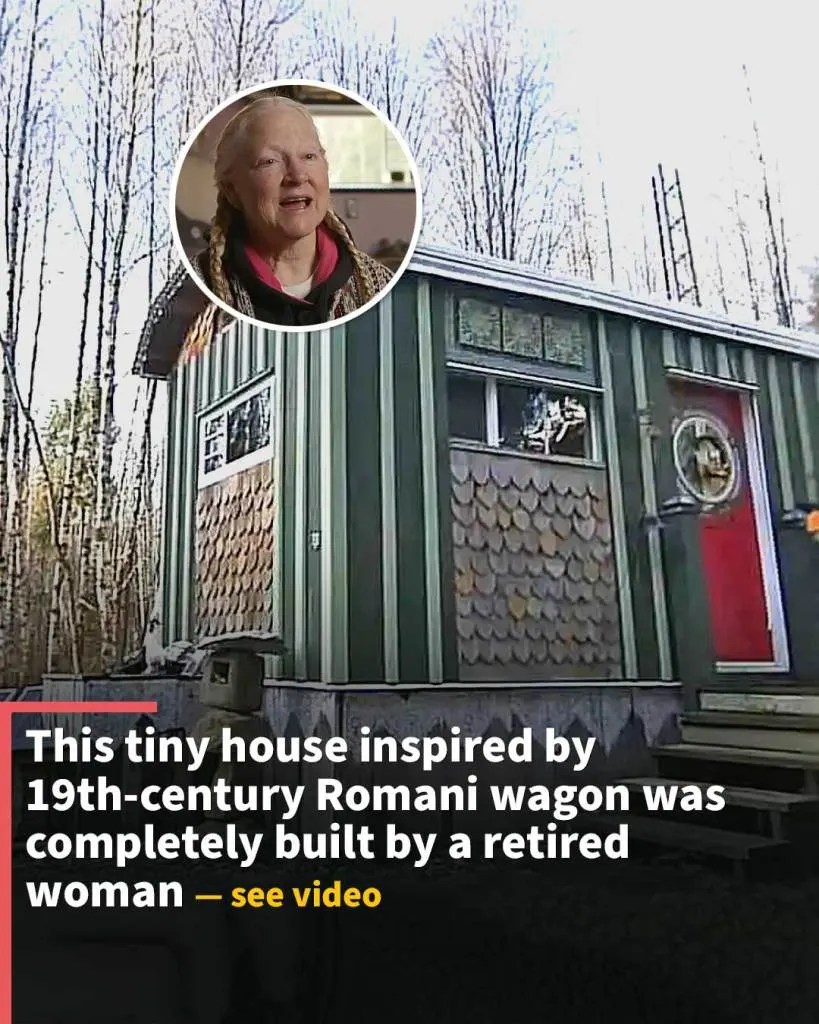A retired woman resides in her self-built tiny home, meticulously crafted on a limited budget.
Carol’s life has greatly improved since she began living in her tiny house, The Dragon’s Nest, which she built in 2019.
Despite initially planning to have help, she constructed it alone, a decision she doesn’t regret.
“I was supposed to have help, but circumstances led me to build it alone. I don’t mind because now I know every single nail, screw, and piece of glue that’s in this house, and I can fix anything that goes wrong with it because I did it all myself,” she said.
For the past three years, she has lived off-grid in a picturesque forest on Vancouver Island, surrounded by the 1800s Roma vardo wagon-inspired theme of her house, which reflects her artistic sensibilities with its colorful, patterned, and textured décor.
“For me, this home is absolutely perfect. It might not be for someone else, but someone else doesn’t have to live in it right now,” she said.
Carol experienced living in homes of various sizes throughout her life, but she eventually chose to downsize and live in a tiny house.
In 2016, she gathered materials, favoring reclaimed items and garage sale finds.
With careful planning and a stroke of luck finding an affordable trailer, Carol embarked on building her tiny home in 2018.
The onset of the COVID-19 pandemic meant Carol had to complete the project mostly by herself, though she received some assistance.
It took her about a year to finish construction, during which she prioritized safety and precision.
Opting to pay cash for new essentials and investing in inspections, Carol ensured her home met all necessary codes.
Thanks to her thrifty approach and resourcefulness, Carol built her entire home, including the trailer, for less than $20,000.
By being savvy with spending and repurposing existing items, she turned her dream of living in a self-built tiny home into reality without breaking the bank.
Carol meticulously documented the history of her tiny house, the Dragon’s Nest, in a carefully compiled book, including all receipts to track construction expenses.
She acknowledges her brother-in-law Gary for teaching her essential building skills.
The house, measuring 320 square feet internally, primarily consists of dimensional mill Douglas fir, complemented by cedar shingles intricately cut in a dragon scale pattern.
The front area of the vardo functions as a spacious great room, encompassing Carol’s living, dining, and kitchen spaces.
She chose this layout to foster an expansive and easily navigable environment.
Enhancing the charm of the great room, the ceiling features panels acquired from Upper Canada Village, pressed with a Victorian tin plate pressing machine.
Each element within the home holds significant meaning, with many pieces originating from Carol’s previous residence.
Carol incorporated a box bed for the front of her nook bed, following the traditional style of Vardo wagons.
She refurbished various pieces for her self-built tiny home, including a toilet crafted by a skilled young woodworker.
Living completely off-grid, Carol hauls her water and stores it in large totes, utilizing a pump and treatment system to bring water into her home.
Solar panels provide most of her electricity, backed up by a generator for cloudy days.
To keep warm in the 320 square feet space, Carol relies on a ventless propane heater designed for mobile homes, which efficiently heats her home.
She prioritizes eco-friendly practices, using natural cleansers and a composting toilet to manage waste.
However, due to regulations, finding a suitable parking spot for her tiny home posed a challenge.
Carol eventually secured a partnership with a landowner, though the legality of her arrangement falls into a gray area until the housing crisis is addressed at the provincial level.
Despite the challenges, Carol enjoys her retired life, supported by her Canadian pension.
She volunteers at local organizations like the food bank and Habitat for Humanity and shares her experiences living in a tiny house and off-grid living through her Facebook page, The Dragon’s Nest.
While her expenses increase slightly during the winter, Carol finds living in her self-built tiny home, especially during the summer, remarkably affordable compared to traditional housing options.
She acknowledges the hard work and dedication that went into building her tiny paradise, cherishing every aspect of her home.
“I don’t want to mislead anybody into thinking it was easy to get into this tiny home. It took an awful lot of work and dedication. Every blister, every cut, every bruise, every sore muscle that went into building this house made it a miniature paradise that I love to come home to,” Carol said.
Tour inside Carol’s self-built tiny home through the video below:
See more tiny home videos like this by subscribing to Exploring Alternatives‘ YouTube channel.
You can also follow Carol’s Dragon Nest on Facebook and read her blogs on her website.
Discover more from My Positive Outlooks
Subscribe to get the latest posts to your email.


